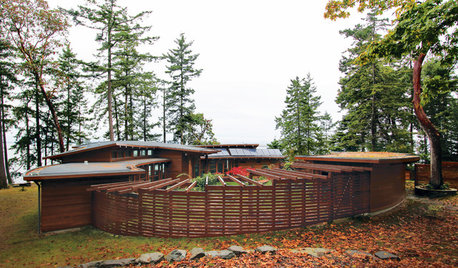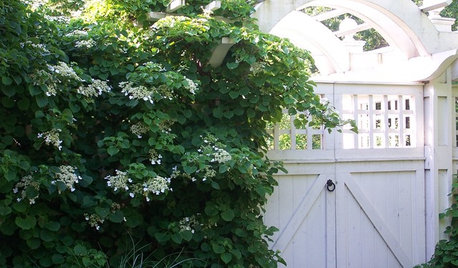Electric deer fence
johnnycoleman
9 years ago
Related Stories

GARDENING GUIDESGreat Garden Combo: 3 Wonderful Plants for a Deer-Resistant Screen
Protect your privacy and keep deer at bay with a planting trio that turns a problem garden area into a highlight
Full Story
CONTAINER GARDENS7 Deer-Resistant Flowers for Your Summer Containers
Grow these as protection for edibles or just for their colorful beauty — deer might not like them, but everyone else will
Full Story
GARDENING GUIDES10 Deer-Resistant Native Flowers to Plant This Fall
Learn about natives that embrace some kinds of wildlife but resist grazing deer
Full Story
FENCES AND GATESA Deer Fence Can Be Decorative as Well as Protective
You need a monster-size fence to shelter your garden from deer, but it doesn’t have to look like a monstrosity
Full Story
GARDENING GUIDESOh, Deer! 10 Native Flowers That Stand Up to the Herds
Keeping a garden amid hungry deer can be hard, but these plants should fare well
Full Story
GARDENING GUIDESTop 12 Summer-Blooming Perennials for Deer-Resistant Drama
Can you have garden color, fragrance and exciting foliage with hungry deer afoot? These beauties say yes
Full Story
FALL GARDENING6 Deer-Resistant Flowering Vines to Plant This Fall
Have a major deer problem? Here are some of the only vines that have a chance of not being eaten
Full Story
FALL GARDENING9 Deer-Resistant Flowering Shrubs to Plant This Fall
These exquisite shrubs will attract your attention but won’t tempt the deer that roam your neighborhood at night
Full Story
GARDENING GUIDES6 Deer-Resistant Ground Covers to Plant This Fall
Learn about some of the only low, spreading plants that are reliably deer-resistant
Full Story
TREES7 Deer-Resistant Flowering Trees to Plant this Fall
If you live in a neighborhood with roaming deer, consider these beautiful trees that won't tempt hungry guests
Full StoryMore Discussions








slowpoke_gardener
Okiedawn OK Zone 7
Related Professionals
Horsham Landscape Architects & Landscape Designers · Kapaa Landscape Architects & Landscape Designers · Saint Charles Landscape Architects & Landscape Designers · Cincinnati Landscape Contractors · Dunwoody Landscape Contractors · Edwardsville Landscape Contractors · Englewood Landscape Contractors · Fort Payne Landscape Contractors · Goodlettsville Landscape Contractors · Huntington Landscape Contractors · Pomona Landscape Contractors · Twin Falls Landscape Contractors · Westford Landscape Contractors · Casselberry Landscape Contractors · Pittsburgh Decks, Patios & Outdoor EnclosuresjohnnycolemanOriginal Author
slowpoke_gardener
johnnycolemanOriginal Author
Okiedawn OK Zone 7
johnnycolemanOriginal Author